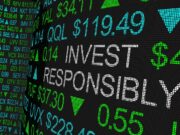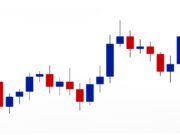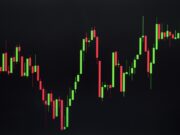Seeking out great stocks to buy is important, but many would say it’s even more essential to know which stocks to steer clear of. A losing stock can eat away at your precious long-term returns. So, determining which stocks to trim or eliminate is essential for proper portfolio maintenance.
Even the best gardens need pruning, and our team has spotted a few stocks that seem like prime candidates for selling or avoiding. Continue reading to find out which three stocks our team is staying away from this week.
According to CME data, investors expect to see short-term interest rates jump to a range of 5% to 5.25% before pausing, pointing to an increasingly likely recession in the wings. According to The Economist, in six of the past seven rate hiking cycles where rates increased this rapidly, a recession formed within two years.
One stock that has been especially vulnerable during recessions that may surprise you is aircraft maker Boeing (BA). The share price has dropped an average of 40% in the past five recessions, underperforming every other S&P 500 stock by the same metric. Shares of Boeing sank 56% in the recession that began in 2020, 43% in the one that started in 2007, and 47% in the 2001 recession.
Despite its role as a leader in commercial airplanes, demand seems to evaporate for Boeing products during recessions, along with its typically healthy backlog and direction for the stock. That presents a real hazard for anyone eyeing BA after plunging 37% so far this year. If a recession is forming, this could be just the beginning of Boeing’s losing streak.
At their September lows, Boeing shares were approaching levels comparable to the early days of the pandemic. If the economy is indeed heading toward an extended slowdown, it could take years for Boeing shares to reach previous heights. Given all of the uncertainties combined with the lack of any significant positive catalyst for the company heading into 2023, we’re sticking to the sidelines on the stock.
Over the past two years, the dramatic shift from brick-and-mortar shopping to e-commerce has been a tremendous obstacle for investors in malls and shopping centers. The demise of cornerstones like Sears and JCPenny hastened the decline as shopping malls are now left without anchor tenants. Recent data suggests that 25% of America’s 1,000 malls will be closed in the next 3-5 years.
Leading shopping mall REIT Simon Property (SPG) is struggling to pivot amid the inexorable decline of its core asset group. The REIT has been aggressive in diversifying into outlets and foreign real estate, which may help to hedge against increasingly substantial losses from their shopping mall category. But given current inflation and the possibility of an economic slowdown, both shoppers and retailers may be in a tight spot this holiday season which will inevitably weigh heavily on SPG.
Investors choose REIT stocks because of their income-producing abilities and yields. The fact that SPG is concentrated in brick-and-mortar retail is tangential to its income feature. Anyone looking for the reliable income that real estate and mortgage investments can bring would be wise to steer clear of Simon Property for now.
Food delivery leader and pandemic darling DoorDash (DASH) was one of the big winners in the shift to stay-at-home culture. Between 2019 and 2021, DASH revenue increased by 451% from $885 million to $4.88 billion. But once the economic reopening was complete, Wall Street’s enthusiasm over the stock sharply halted. Since hitting its peak in November of last year, the stock has plunged more than 75%. Now that the tide has washed out, investors are left to access what’s left, searching for an answer to the looming question – is profitability in the cards for DoorDash?
DoorDash has never generated a profit, with the exception of the second quarter of 2020, where it made a profit of $23 million. “It took a global pandemic to drive the firm’s one-quarter profitability. The firm has not been profitable since, and we think it may never be,” said David Trainer, the CEO and founder of New Constructs.
The company reported third-quarter revenue and EBITDA of 4% and $29M above consensus expectations, but DASH’s EPS is estimated to remain negative in 2022 and 2023. The company is expecting $49 to $51 billion in gross order volume in 2022, implying a modest 14% increase from $41.9 billion last year. However, that’s not enough to justify DASH’s lofty valuation. Currently, the stock trades at a price-to-sales multiple of 4.6, expensive compared to top competitors like Uber Technologies (UBER), which trades at a price-to-sales multiple of 2.1 – half that of DASH.
You might also like:
- The Crypto Melt-Up has Begun
- “A.I. is a Tidal Wave” – Here’s What to Buy
- Beware Executive Order 14067
- #1 AI Stock for 2024 and Beyond
- Bank plague 2024
- Gates, Bezos, and Buffett invest in AI Keystone
- Congress Just Fast-tracked New A.I. Energy Breakthrough
- Elon Musk: THIS will be bigger than Tesla
- EV charging stations that pay you up to $93/day!
- Legendary Wall Street Stock-Picker Names #1 A.I. Stock of 2024, Live On-Camera























